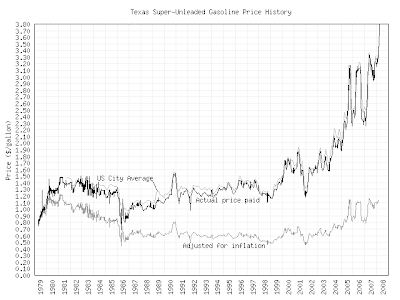
by Paul Wyche | The Saginaw News
Monday May 05, 2008, 7:46 AM
RELATED STORIES:
• Experts: Abandon hopes of cheaper fuel
•Consumer behaviors change to meet gasoline price increases
Don’t blame that buzzing you hear this summer on the mosquitoes.
As fuel prices increase, more people are looking at motorcycles, scooters and mopeds to get them where they need to go.
After 14 consecutive years of increases, total motorcycle sales in the U.S. declined slightly in 2007, said Mike Mount, a spokesman for the Irvine, Calif.-based Motorcycle Industry Council, a nonprofit trade organization, which reported 1.1 million units sold nationally.
“However, 2007 was still at least the third-best year for motorcycle sales in the past 30 years, and sales of scooters and dual-purpose bikes were at their highest levels in the past 20 years, showing strong interest in affordable, fuel-efficient bikes,” Mount said.
Wohlfeil’s Hardware, 5818 State in Saginaw Township, has watched buyers zip off the lot on dozens of its 30-mph scooters as workers with short commutes, parents buying for their teens and others decide to shell out about $2,000 to get 118 mpg.
“That’s our best-selling model, but we have some that cost $5,799 and are faster. They’re getting hard to get,” said Herb Schmidt, a sales associate at the store. “The roads could get crowded with them this summer.”
Wheels a’turnin’
Just last week, General Motors Corp. said the nation’s economic problems forced it to slash production of full-size pickups and SUVs by 143,000 vehicles. (too bad they didn’t see this coming a couple of years ago.)
Drivers are looking for more fuel-efficient ways to get around.
The GM cuts will take place at four plants, including two in Michigan. For the automaker and its workers, the reductions add pain to a string of bad news. A spokesman said GM does not reveal the projected number of total autos that will roll off assembly lines.
Since February, GM has had to either stop or cut production at more than two dozen plants, partly because of a supplier strike and because customers are gravitating to smaller cars in the face of spiking gasoline prices.
“With rising fuel prices, a softening economy, and a downward trend on current and future market demand for full-size trucks, a significant adjustment was needed to align our production with market realities,” said Troy Clarke, president of GM North America operations.
Small cars are now the largest portion of the U.S. auto market, accounting for 18 percent of new car sales.
Last year, U.S. consumers bought a record 2.8 million of them, and with sales already up 4 percent in the first quarter this year, the record appears likely to fall.
AAA Michigan spokesman Jim Rink sees no end to high fuel prices.
“There are no new refineries being built, and global demand is rising,” he pointed out. “There are no short-term solutions. We just have to deal with it.”
Once seen as status symbols, SUVs are losing their appeal among consumers worried about their wallets, said Ed Heinz, a salesman for Garber Nissan Hyundai, 5450 Bay in Kochville Township.
“We have a lot of people who are trading them in for mid-size cars with better mileage,” he said.
Buyers even are giving two-seater electric cars a look. Though it may resemble a golf cart, the Chinese-built Flybo has generated significant interest at Great Lakes Auto Sales, 2205 N. Michigan in Saginaw.
“I must get 50 e-mails a day asking about it,” said Dave LaTarte Sr., the dealership’s owner, adding the 2008 models have several upgrades, including longer run times and heat, meaning motorists can drive them in cold months.
“People are wanting to see them.”
The $13,000 vehicles travel up to 150 miles before needing a recharge. They plug into any ordinary household electrical outlet for two to three hours, and then can take to the roads cruising along at 40 mph.















Tue, May 6, 2008
Peak Oil